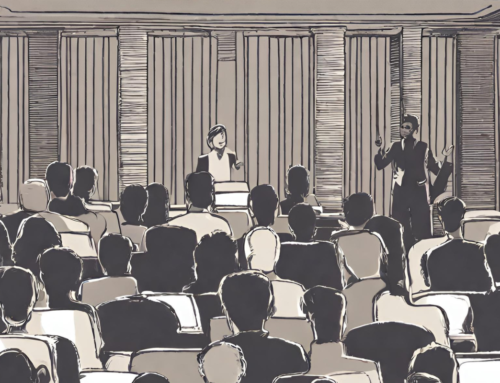People don’t like to be passive. They don’t like to sit still and do nothing. They’d even rather shock themselves repeatedly than just sit and think, according to a study recently published in Science.
The study received a fair amount of press attention, possibly because it harkened back to the infamous Milgram study from many years ago in which people administered what they though were lethal shocks to other subjects in an experiment that put the people in charge of the red button.
Not a pretty thought.
It’s also possible that we’re getting worse at just sitting and thinking, since the Internet shortened our attention spans to those of goldfish, apparently, and we began to require stimuli 24/7 even as we complain about them 24/7.
I’ve been talking about what to get audiences to do with my clients for many years now. I always say that the job of the speaker is to take the audience from passive to active. Active is the normal state of audiences full of managers and other doers, so asking them to sit still, passively, for an hour is not all that different from asking them to sit and think. Cue audiences reaching for the electric shock machine.
So what can you get audiences to do? I’ve drawn up a list of seven categories of possibilities, to aid you in your thinking.
First, get them to tell stories. People love to talk about themselves, to testify, to tell their stories. Give them a chance to do so in a structured, relevant way.
Second, ask them to brainstorm. Brainstorming goes in and out of fashion among the Creativity Experts, but audiences love to do it. Don’t push for quality, push for quantity and fill up the flip charts.
Third, get them competing. A competition is always fun, when it’s to the point and about the day, the topic, and the speech. Don’t make the prizes too big, or you’ll get resentment among those who don’t win. As Oprah showed, if you’re going to give away cars, you have to give everyone a car.
Fourth, get them to report back to the group. If you break the audience up into small groups – and that’s often the only way to work with large audiences – then make sure you have them report some part of their journey back to the overall group. We crave that kind of validation when we’ve worked on something apart from the crowd.
Fifth, get them teaching. There’s no faster way to find out if you’ve learned something than to try to teach it. So it’s a good way to get an audience to pay deep attention. Let them learn something, and then let them teach it to others.
Sixth, get them designing. Here’s where those visual learners shine – and we’re all visual learners. So get us drawing, constructing, assembling, putting things together. We do that better than the original creation, which is harder to do on a tight timeframe and under pressure.
Finally, get them to create a plan. You want an audience to ask “how” questions, so get them creating the plan for next steps, for implementation, for reflecting the insights you’ve given them in their own organization, and so on.
Don’t be afraid to get audiences acting. They’d much rather act than sit quietly and think. So put them to work before they start shocking themselves.








Nick, Your list of approaches to get an audience from passive to active is excellent. As I think back to some of the best sessions we used to teach MBA students about big data and analytics the approaches you outline were all in play. Can you elaborate with a story or example of the competition approach?
Hi, Maureen —
Thanks for your comment. There are many, many examples of competition. The simplest is to offer a prize for working out some question you pose the audience. Next up the ladder of complexity is breaking the audience into small groups and having them compete in developing a variety of responses to your challenges. I once started a trivia quiz (related to the topic and venue, of course) when, as MC, I learned that my first speaker would be 45 late because his plane was delayed. That worked well in the moment!